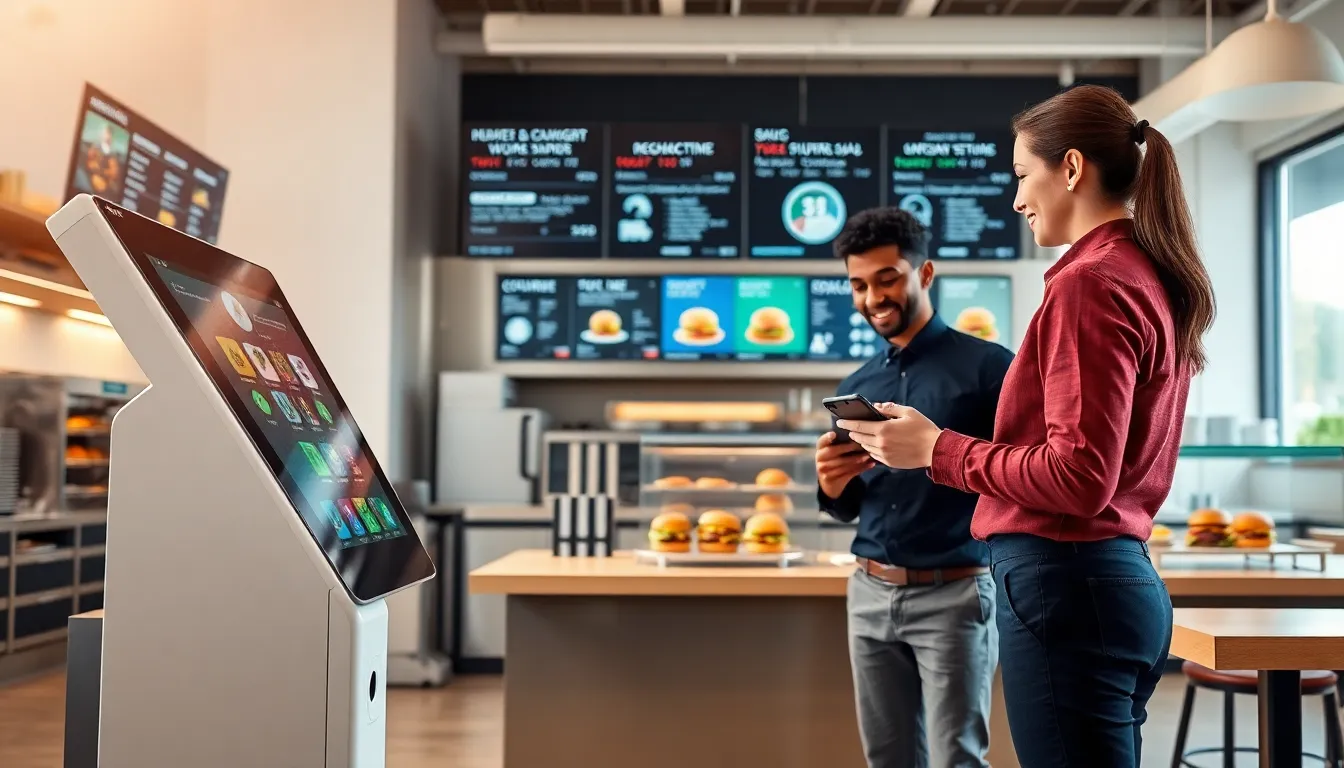Table of Contents
ToggleThe food service industry is evolving faster than a chef flipping an omelet. If you’ve ever wondered what the future holds for dining, catering, and food production, you’re in for a treat. From tech innovations reshaping how meals reach our tables to sustainability practices that make Mother Nature proud, these trends aren’t just passing fads, they’re shaking up the whole culinary landscape. Grab your fork and jump into this delicious exploration of industry trends that are making waves in food service.
Emerging Technologies in Food Service

Food service tech has gone from fancy gadgets to integral parts of restaurant operations. Automation is no longer just a buzzword: it’s a game changer. Robots flipping burgers, automated ordering kiosks, and nifty apps for delivery streamline processes and improve efficiency. Imagine a world where customers can place their orders through their smartphones without talking to anyone. Well, that world is here. Restaurants are increasingly relying on data analytics to predict customer preferences and improve menus. With the right tech in place, they can serve exactly what diners crave at the right moment.
Artificial intelligence and machine learning are also stepping into the kitchen. AI can analyze customer behavior to better manage inventory, meaning fewer wasted ingredients and fresher meals on the plate. Voice-activated assistants like Alexa are even becoming part of the dining experience, turning how customers interact with restaurants on its head.
Sustainability and Environmental Awareness
If there’s one thing everyone can agree on, it’s that we need to treat the planet better. Sustainability in food service is taking center stage. Consumers are now more conscious about where their food comes from, pushing restaurants to adopt eco-friendly practices. Whether it’s sourcing ingredients locally or using biodegradable packaging, businesses are finding creative ways to reduce their carbon footprints.
More restaurants are now joining forces with farmers to create farm-to-table experiences, where customers are not just diners but partners in the sustainability journey. People love knowing their food impacts the earth positively, good for the belly and the conscience. With initiatives like reducing single-use plastics and implementing energy-efficient kitchens, the industry is slowly turning green. Who knew saving the planet could taste this good?
The Impact of Health and Wellness Movements
As health trends rise and fall, so do food service offerings. The past decade has seen a dramatic shift towards healthier eating. From gluten-free to vegan and everything in between, restaurants are adapting their menus to cater to the health-conscious diner. Health isn’t just the absence of illness: it’s about what’s on the plate. Diners are opting for meals rich in nutrients, and they understand that what they consume has long-term effects.
But it’s not only about salads and smoothies: indulgence can be part of the equation too. Restaurants are finding ways to create healthy versions of comfort food, think cauliflower crust pizzas and avocado brownies. This desire for balance means food establishments must think carefully about how they market their meals. They need to play the part of not just a food vendor but a wellness advocate.
Changing Consumer Preferences and Dining Habits
Consumer preferences are as fickle as the weather, and food service providers must stay ahead of the curve. Today’s diners crave flexibility. They want options, convenience, and experiences that go beyond a good meal. The rise of customizable meals and build-your-own-bowl concepts shows that people want to design their meals to suit their tastes.
Also, social media plays a huge role in shaping what people want to eat. A viral TikTok trend can turn a simple dish into a sensation overnight. Restaurants are learning that plating and presentation can influence diners as much as taste does. Diners are also looking for experiences, not just meals. The food service industry has to deliver memorable dining experiences that include ambiance, storytelling, and, perhaps most importantly, Instagrammable moments.
The Rise of Ghost Kitchens and Virtual Restaurants
Ghost kitchens and virtual restaurants are changing how food goes from kitchen to customer. These concepts eliminate the need for a traditional storefront, cutting costs and enabling restaurateurs to focus on delivery. Instead of investing thousands in real estate, chefs can whip up their culinary masterpieces in a shared kitchen space, then deliver their creations straight to eager customers’ doors.
This trend empowers budding entrepreneurs to enter the food service space without hefty financial investments. The beauty of ghost kitchens lies in their ability to test new concepts without the risk of failure associated with a physical location. With delivery apps dominating the market, having a brand without a brick-and-mortar presence no longer feels distant: it feels like the future of dining.
Adapting to Labor Shortages and Workforce Trends
Labor shortages have become a pressing issue in the food service industry. With many workers reevaluating their career paths, restaurants must adapt quickly. Emphasizing better working conditions, competitive pay, and flexible schedules is crucial. Creative staffing solutions, such as training programs for newcomers and employing technology to assist staff, are becoming common practices.
Efforts to elevate employee engagement go a long way. Restaurants are fostering team environments that value input, ensuring that employees feel like a vital part of the business. By investing in staff training and growth, restaurants can turn challenges into successes. A happy employee usually leads to satisfied customers. In the food service industry, what’s good for the worker is also good for the diner.




